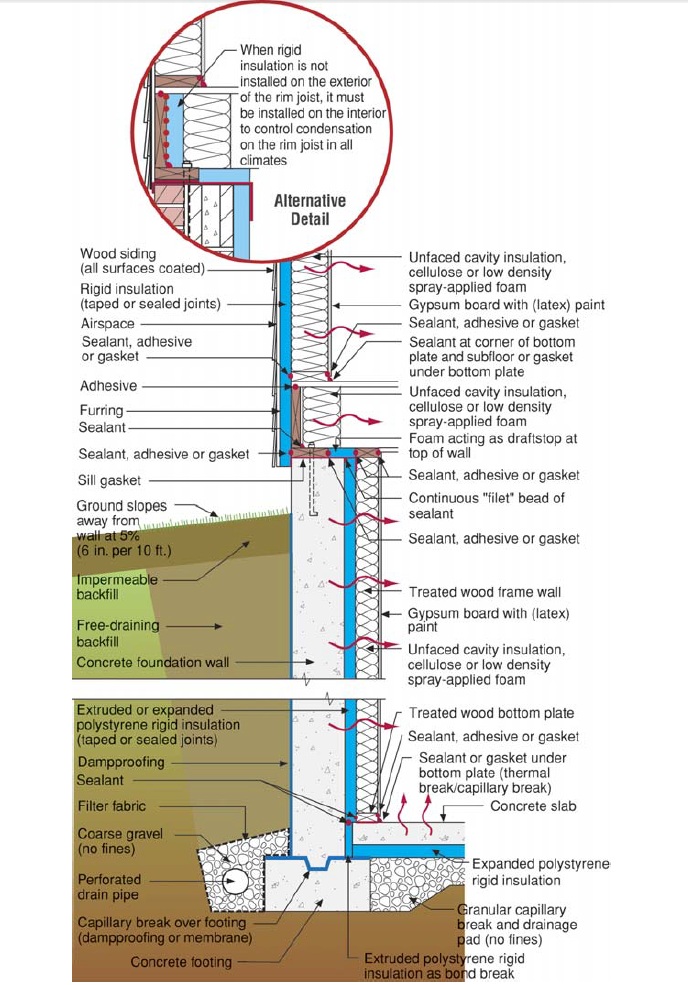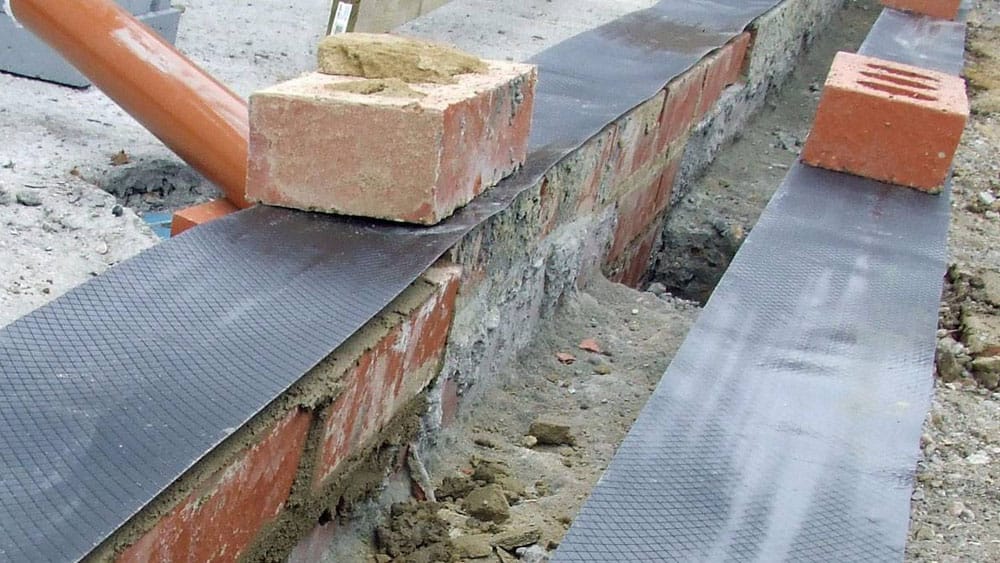Beginner’s guide to understanding rising damp and damp removal newcastle
Exploring the Different Methods and Solutions for Effective Damp Proofing
Moisture in buildings postures significant difficulties to both architectural honesty and interior air quality. Various techniques and services have actually emerged to battle this prevalent problem. From conventional damp-proof membranes to ingenious chemical treatments, each technique supplies unique benefits. Comprehending these alternatives is necessary for reliable wetness control. Picking the ideal option depends on certain building conditions and demands, motivating more exploration right into the most efficient moist proofing techniques available.
Understanding the Root Causes Of Moisture
Dampness can arise from various resources, understanding these reasons is crucial for reliable removal. Typically, dampness stems from three key resources: increasing wet, permeating wet, and condensation. Increasing damp happens when groundwater travels up through permeable materials, such as block or stone, commonly because of an absence of a reliable barrier (mould removal newcastle). Permeating moist is typically caused by outside factors, consisting of roofing leakages, defective gutters, or damaged walls, allowing water to infiltrate a property. Condensation, on the other hand, results from excess dampness airborne, often worsened by inadequate ventilation and temperature level distinctions, bring about water beads developing on surfaces. Recognizing these underlying issues is necessary, as each sort of dampness calls for a customized technique for removal. Appropriate analysis assists in identifying the most reliable remedies, eventually safeguarding the structural stability of a structure and boosting interior air quality
Conventional Damp-Proof Membranes

Chemical Damp-Proofing Solutions
Chemical damp-proofing services provide an innovative approach to stop wetness intrusion in buildings. These techniques commonly involve the application of liquid chemicals that penetrate masonry and form a barrier versus increasing damp. Frequently used chemicals include silanes, siloxanes, and various other water-repellent representatives that respond with surface area materials to produce a hydrophobic layer.The application procedure normally requires drilling holes right into the walls, injecting the chemical remedy, and enabling it to treat. This method is particularly beneficial for older frameworks where standard damp-proof membrane layers may be not practical. Furthermore, chemical damp-proofing can be less disruptive and extra economical than extensive remodelling projects.While effective, these services rely on appropriate application and environmental conditions for peak performance. Regular upkeep and surveillance are vital to assure the longevity of the damp-proofing treatment. Generally, chemical damp-proofing represents a versatile option for safeguarding structures versus moisture-related damages
Cavity Wall Surface Building And Construction Methods
Cavity wall building and construction techniques provide countless benefits, specifically in dampness control and power efficiency. By integrating an air gap between 2 layers of stonework, these walls properly mitigate water access while enhancing insulation. This mix not just safeguards frameworks from moisture yet likewise adds to reduced power consumption.
Benefits of Dental Caries Wall Surfaces
When taking into consideration efficient damp proofing techniques, the benefits of dental caries wall surfaces stick out prominently. Tooth cavity wall surfaces contain two separate layers, developing an air void that effectively reduces moisture infiltration. This design decreases the threat of dampness, as the external wall serves as a barrier versus rainfall and water ingress. Furthermore, cavity walls enhance thermal insulation, which adds to power performance by reducing warm loss. They also supply audio insulation, assisting to create a quieter interior environment. In addition, the air space permits air flow, which helps in dampness control and lowers the probability of mold and mildew growth. These benefits not just enhance the general comfort of a structure yet also add to its long life and architectural honesty.
Dampness Control Methods
Efficient dampness control methods are crucial in dental caries wall construction to assure lasting defense against wetness. One main approach entails the incorporation of weep holes, which facilitate water drain from the dental caries, stopping build-up. Additionally, making use of breathable membranes can help manage moisture degrees while permitting trapped vapor to escape. Appropriate positioning of insulation is additionally crucial, as it must not block drainage paths. In addition, making sure that the outer leaves of the tooth cavity wall surface are built with water-resistant materials boosts total toughness. Routine upkeep checks are necessary to determine any clogs or damage early, guarding the framework's honesty. Ultimately, a combination of these methods develops a durable defense versus moisture intrusion in dental caries walls.
Insulation and Power Performance
Insulation plays an important function in improving energy efficiency within tooth cavity wall building. By integrating protecting products, these walls produce a thermal obstacle that minimizes heat loss and decreases power consumption. Efficient insulation not just assists keep a steady indoor temperature yet also mitigates the threat of dampness, as it stops condensation within the wall dental caries. Different techniques, such as the usage of inflexible foam boards or mineral wool, can be used to attain excellent insulation efficiency. Furthermore, correct installment is important to guarantee that voids and spaces are lessened, which can otherwise jeopardize power efficiency. Ultimately, a well-insulated tooth cavity wall surface contributes greatly to overall sustainability and lowers cooling and heating prices for house owners.
Exterior Damp Proofing Methods
External moist proofing techniques are vital for shielding frameworks from dampness seepage. 2 efficient strategies consist of the application of water-proof membrane layers and the installation of French drains pipes. These options assist minimize water build-up and preserve the integrity of structures.
Waterproof Membrane Application
While numerous methods exist for stopping wetness ingress, the application of waterproof membranes continues to be an extremely efficient exterior moist proofing technique. These membranes are commonly made from materials such as polyethylene, rubber, or customized bitumen, giving a durable obstacle against water penetration. The installation procedure involves using the membrane layer to the external surface areas of structures or walls, ensuring full coverage to stop leakages. Correct adhesion and securing at joints are important to maximizing effectiveness. Waterproof membranes can be applied in numerous kinds, including liquid layers and sheet membranes, permitting flexibility based upon the details requirements of the structure. This approach not only shields structures from moisture however additionally enhances their long life and architectural stability.
French Drain Installment
One efficient approach for handling groundwater and preventing dampness accumulation around a building's structure is the installation of a French drain. This drainage system is composed of a trench loaded with gravel and a perforated pipe that reroutes surface water far from the structure. Appropriate installation calls for mindful planning, making sure that the drain inclines far from the structure to facilitate optimal water flow. Furthermore, the place of the drain is vital; it should be placed in areas prone to merging or excess wetness. Regular upkeep, including clearing up debris from the crushed rock more info and guaranteeing the pipeline continues to be unhampered, is crucial for long-term effectiveness. Eventually, a well-installed French drain can greatly minimize the danger of water-related concerns in structures and basements.
Inside Waterproofing Methods
Interior waterproofing approaches are important for protecting a structure's inside from wetness seepage and potential water damages. These techniques commonly include the application of customized materials and strategies made to develop a wetness barrier within the framework. One usual strategy is making use of water-proof finishings or sealers on walls and floorings, which prevent wetness from passing through surfaces.Additionally, installing interior water drainage systems, such as sump pumps, can efficiently manage water build-up in cellars and crawl areas. One more approach involves the use of vapor obstacles, which are installed to prevent moisture activity from the ground into living spaces.Moreover, resolving any kind of cracks or voids in walls or structures with ideal sealants assures a comprehensive defense against water invasion. By applying these indoor waterproofing approaches, home proprietors can greatly reduce the risk of mold and mildew growth, structural damage, and various other moisture-related problems. Appropriate execution of these techniques is vital for long-lasting security and building integrity.
Normal Upkeep and Assessment Practices
Routine maintenance and examination techniques are crucial for ensuring the lasting effectiveness of damp proofing solutions in any structure. Routine checks enable building proprietors to identify early signs of moisture intrusion, such as peeling paint, mold and mildew growth, and mildewy smells. These signs can indicate underlying concerns that require immediate attention.Inspections should be carried out a minimum of every year, concentrating on at risk areas like cellars, crawl rooms, and outside walls. Throughout these evaluations, residential property proprietors ought to analyze sealers, drain systems, and ventilation to validate they work correctly.Additionally, maintaining gutters and downspouts is crucial, as stopped up systems can result in water buildup near the structure. Executing a normal maintenance timetable, together with timely fixings, can significantly extend the life expectancy of wet proofing measures and shield the structural stability of the structure. Proactive steps inevitably add to the overall health and wellness of the living setting.
Frequently Asked Concerns
Just How Lengthy Does Damp Proofing Generally Last?
The duration of moist proofing performance varies, usually lasting in between 20 to half a century. Factors such as application high quality, ecological conditions, and maintenance techniques significantly affect the longevity of the damp proofing therapy.

Can I Damp Proof My Home Myself?
The specific pondered the expediency of DIY damp proofing. With proper study and the ideal materials, it is possible. They additionally recognized the value of expert guidance to ensure resilient effectiveness and avoid future problems.
What Are the Indicators of Ineffective Damp Proofing?
Indications of inefficient wet proofing include relentless moldy smells, noticeable mold and mildew development, peeling paint, damp patches on walls, and wood degeneration - damp specialist newcastle. Home owners should deal with these concerns promptly to avoid additional damage and health and wellness worries
Does Damp Proofing Affect Indoor Air Top Quality?

Just How Much Does Specialist Damp Proofing Expense?
Specialist moist proofing costs vary considerably, commonly ranging from $1,000 to $5,000 relying on the home's size, the extent of the wet problem, and selected approaches. Each scenario needs a customized evaluation for exact prices. Generally, wetness originates from three primary resources: increasing moist, passing through wet, and condensation. When considering effective damp proofing techniques, the advantages of tooth cavity wall surfaces stand out plainly. Exterior wet proofing approaches are important for safeguarding structures from wetness infiltration. While different techniques exist for stopping wetness ingress, the application of water resistant membranes stays a highly effective external wet proofing strategy. Signs of ineffective wet proofing include consistent musty odors, visible mold and mildew development, peeling paint, damp spots on walls, and timber degeneration.